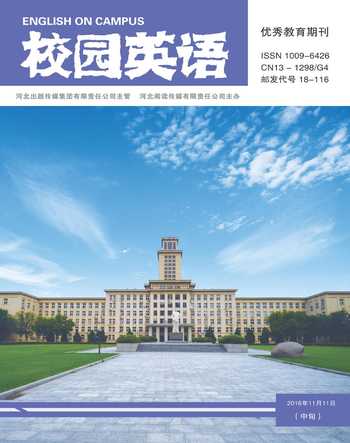Features of Poems in Hongloumeng
Liu Kehong
【Abstract】Among the tremendous numbers of literary works, Hongloumeng is a resplendent jewel. The poems in it play a vital role in deepening the theme and ideology, as well as unfolding the plot and frame. This paper explores the features of poems in Hongloumeng.
【Key words】Features; Poems; Hongloumeng
I. Introduction
Cao Xueqins Hongloumeng is an outstanding poeticized novel, whose free-flowing prose is soaked in the fragrance of poetry. Its large quantity of poems, like pearls and stars inlaid in the sky, glitter with a fantastic light. It should be noted that here “poems of Hongloumeng” actually include various genres of verses: poem, ci, song, fu, Buddhist verse, elegy, couplet, inscription, lantern-riddle, drinking game, parallel prose, etc. In this sense, “embodying diversiform styles” is the foremost artistic feature of Hongloumeng, which has not been seen in other novels.
II. Features of Poems in Hongloumeng
It is not true that this novel does not touch at all on current events or its main theme is love, but it just conceals passing censure on the times(蔡义江,2009). Sometimes the words unable to be said in the main body of narration can be expressed in the poems, thus it is easier to make criticisms veiledly in this way.
Poems of Hongloumeng are integral to the plot and character portrayal, which distinguishes it from other novels. Admittedly some novels also insert poems into their stories, yet in most cases those poems are merely dispensable. Even though they are deleted, the content may not be affected but become more compact. This is not the case in Hongloumeng, most poems of which blend into the plot. If we omit to read them, we will surely not figure out the meaning of context.
In this novel, the depictions of composing poems, making lantern-riddles, playing drinking games etc reflect in many ways the ruling classs cultural and spiritual life of that era (周雷,1986). Chanting poems was the universal fashion of the class who dominated culture and had leisure, and moreover was for men. Cao Xueqin conceived and created Hongloumeng on the basis of the abundant living materials obtained from his informative, personal experiences, determined to make it emerge for leaving a record of lovely girls in boudoir. Therefore, he forged and deformed the familiar materials: the original males could be changed into females; the occurrences outside the home or in the court might as well be shifted inside the family. This makes readers feel that all written are nothing but the daily anecdotes and trivialities of boys and girls in Grand View Garden. However in fact, the reality delineated indirectly through the characters and stories, extends further the range of superficial representations.
The poems here are subject to the needs of portraying characters and describing plot, which is compared to “hatting according to ones head” by Mao Dun (蔡义江,2009:1). It is hard enough to depict a group of clever, brilliant boys and girls poetizing, then it must be doubly difficult to compose the poems fit for their respective personalities. When Cao Xueqin mimicked the characters to versify, their tones were already in his minds eye. He meticulously arranged a chanters peculiar disposition and attitude toward life to coincide with the property of chanted object or the most agreeable poetic style of chanting an object.
III. Conclusion
Another uniqueness in the artistic expressions of the poems is that Cao Xueqin liked covertly writing the characters fates beforehand (叶嘉莹,2004). And this implicit prediction is fulfilled by diverse methods. With regard to integrity and rigor of the novels artistic structure, these augury poems can demonstrate that every character or matter written, he had overall mindedness within his chest, and his vision remained throughout the whole story. This writing characteristic is significant to the exploration of the original works design, theme, and the plot of the lost manuscript.
References:
[1]蔡义江.红楼梦诗词曲赋全解[M].上海:复旦大学出版社,2009.
[2]叶嘉莹.漫谈《红楼梦》中的诗词.载于刘士聪(主编),《红楼译评——红楼梦翻译研究论文集》[M].天津:南开大学出版社,2004:25-33.
[3]周雷.《红楼梦诗词解析》序[J].红楼梦学刊,1986(4):301-318.

